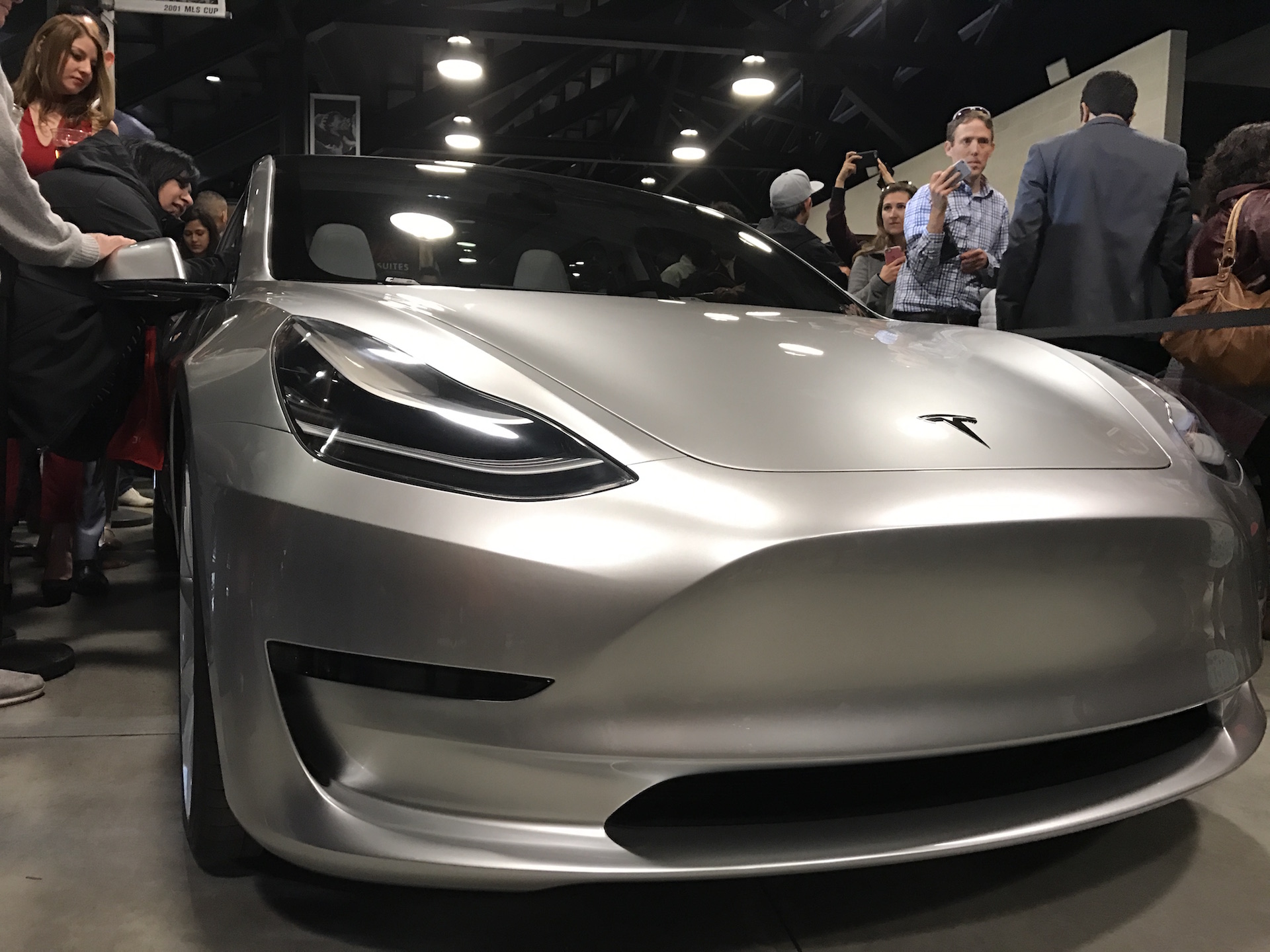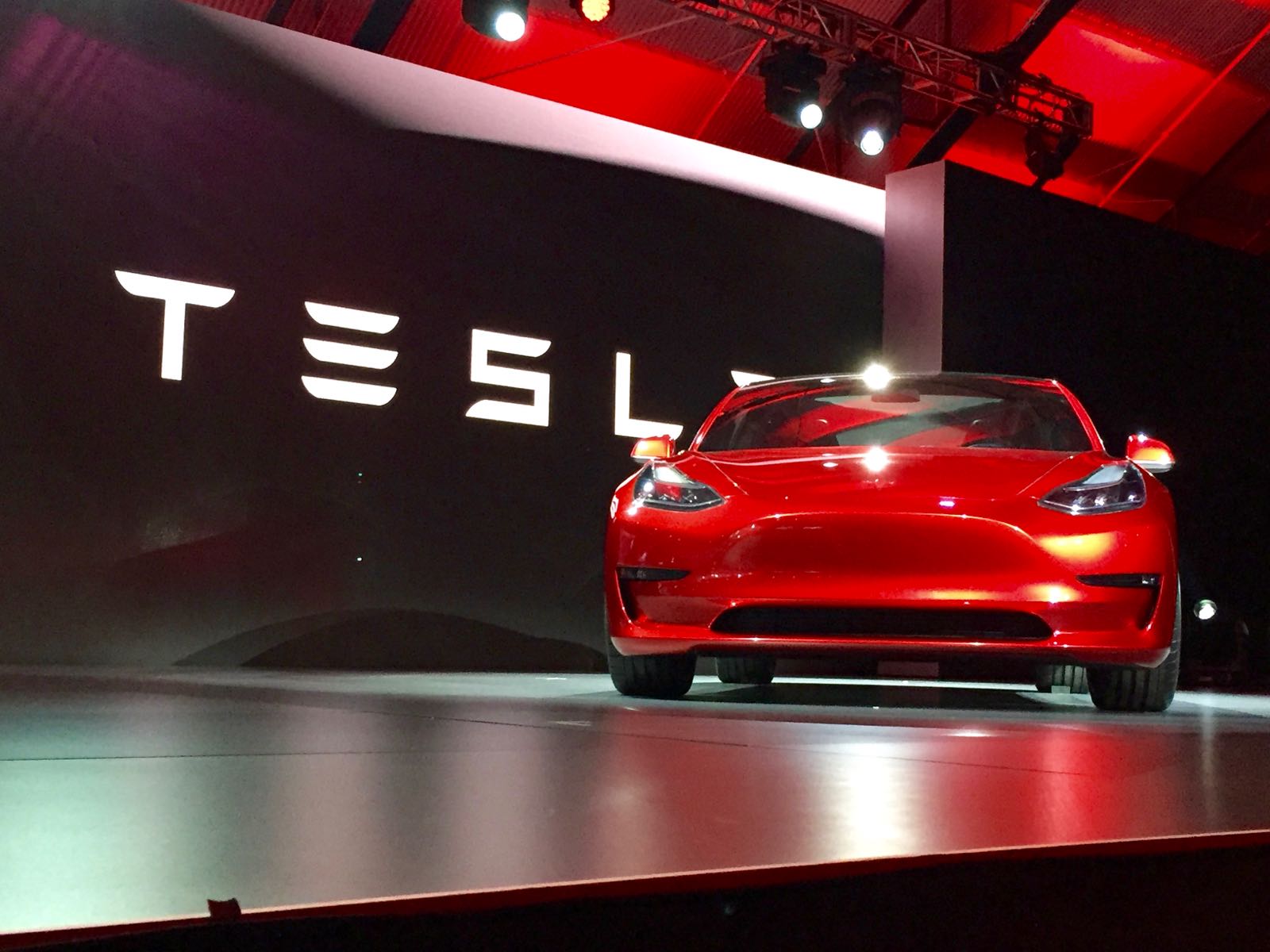News
Tesla Model 3 has an important upper middle class audience to please

As Elon Musk continues to focus on his top 3 priorities for Tesla, emphasis on preparing for Model 3 production – arguably the most important vehicle in the company’s history – couldn’t be more pertinent.
The Model 3 will be emblematic of Tesla’s capacity to offer a highly safe and efficient means of transport for a middle to upper middle class segment that largely depends on vehicle reliability in order to commute. It looks like these upwardly mobile folks are buying into that Tesla promise (pun intended): by October 2016, nearly 400,000 reservations had already been placed on the Tesla Model 3.
Starting at $35,000 before incentives, the Model 3 will achieve a minimum of 215 miles of range per charge and has been designed to attain the highest safety ratings in every category. According to the Tesla website, “The Model 3 combines real world range, performance, safety, and spaciousness into a premium sedan that only Tesla can build.” Potential Model 3 buyers make a reservation through the company’s website by putting down a $1000 deposit. The Model 3 has a starting price of about half the base price of the flagship Tesla Model S and has the size and stance of the Mazda 3.
Jessica Caldwell, an Edmunds.com analyst, argues that, if Tesla Motors wants “to bring the EV to the mass market, they need the Model 3 to be successful.”
The Model 3 will be a sedan, although other versions may one day include a Model Y compact SUV. Base rear-wheel-drive Model 3 vehicles are expected to achieve at least 215-miles of range; all-wheel drive will be offered, and a larger battery capacity with longer range is expected. Tesla’s Full Self-Driving Capability is also expected to be a standard offering.
“This is their chance to prove that they are not just a specialized niche automaker, but actually a long-term volume automaker,” said Karl Brauer, an analyst at Kelley Blue Book. “They have to establish that they can build a high-quality volume vehicle.”
Being upper middle class is a swirling confluence of financial comfort, identity, dreams, and lifestyle options. The Tesla Model 3 may very well become one of the most significant markers of status stability, with its associated components of having a college education, white-collar work, economic security, and home ownership. Soon, many upwardly mobile consumers will be adding “owning a Tesla” to that definition. Indeed, fewer than 5% of reservation holders are likely to choose a minimalist entry level Model 3 car. By contrast, close to 7% say they intend to check every available check box in the Model 3 Design Configurator once it becomes available.
If there’s an option available, the future upscale Tesla Model 3 audience will get it, as the number of options will be new indicators of levels of wealth and class.
Of course, these soon-to-be Tesla owners will have high expectations for all aspects of the Tesla process. First production of Model 3 is still scheduled for mid 2017, while delivery estimates for new reservations are expected to take place mid 2018 or later. Musk admitted that Tesla had hubris in designing and engineering the complicated Model X. As a result, Tesla learned a lot about selling, building, and delivering, which it applied to the Model 3 with much greater production streamlining. “With any new technology, it takes multiple iterations and economies of scale before you can make it affordable,” Musk has said. A mass-market car “was only possible to do . . . after going through the prior steps.”
The Model 3 is the next step in the learning process, but Tesla has done the preparation.
The Model 3 was unveiled in March of 2016 with operational prototype cars. In anticipation of much higher delivery numbers associated with the Model 3, Tesla hired former Audi executive Peter Hochholdinger as its Vice President of Vehicle Production. Hochholdinger had been in charge of production for the A4, A5, and Q5 vehicles, with around 400,000 vehicles per year under his watch. He should be a key asset as Tesla looks to roll out Model 3s in quantities that far exceed the number of cars the company has made to date.
Tesla has dealt lately with some supplier issues and has brought production of some components in-house. Other components, however, continue to be manufactured by established companies. For example, reports indicate that the Model 3’s center touchscreen will be supplied by LG Display.
By spring 2017, Model 3 photos and videos — shot both by bystanders and insiders — should start to circulate. Eventually, too, the government will need to ascertain the safety of Model 3 via crash-testing, and resulting reports will have a big impact on eventual delivery dates.
The Model 3 sedan will use some of the same glass technology that the company is using for its solar roof tiles, which should introduce an upper middle class audience to new ways of thinking about residential energy systems. The Model 3 is said to accelerate with an alluring still rush. It is just that rush— as well as zero-emissions and self-driving capability— that the upper middle class market has been awaiting.

News
Tesla gets a win in Sweden as union withdraws potentially “illegal” blockade
As per recent reports, the Vision union’s planned anti-Tesla action might have been illegal.

Swedish union Vision has withdrawn its sympathy blockade against Tesla’s planned service center and showroom in Kalmar. As per recent reports, the Vision union’s planned anti-Tesla action might have been illegal.
Vision’s decision to pull the blockade
Vision announced the blockade in early December, stating that it was targeting the administrative handling of Tesla’s facility permits in Kalmar municipality. The sympathy measure was expected to start Monday, but was formally withdrawn via documents sent to the Mediation Institute and Kalmar Municipality last week.
As noted in a Daggers Arbete report, plans for the strike were ultimately pulled after employer group SKR highlighted potential illegality under the Public Employment Act. Vision stressed its continued backing for the Swedish labor model, though Deputy negotiation manager Oskar Pettersson explained that the Vision union and IF Metall made the decision to cancel the planned strike together.
“We will not continue to challenge the regulations,” Petterson said. “The objection was of a technical nature. We made the assessment together with IF Metall that we were not in a position to challenge the legal assessment of whether we could take this particular action against Tesla. Therefore, we chose to revoke the notice itself.”
The SKR’s warning
Petterson also stated that SKR’s technical objection to the Vision union’s planned anti-Tesla strike framed the protest as an unauthorized act. “It was a legal assessment of the situation. Both for us and for IF Metall, it is important to be clear that we stand for the Swedish model. But we should not continue to challenge the regulations and risk getting judgments that lead nowhere in the application of the regulations,” he said.
Vision ultimately canceled its planned blockade against Tesla on December 9. With Vision’s withdrawal, few obstacles remain for Tesla’s long-planned Kalmar site. A foreign electrical firm completed work this fall, and Tesla’s Careers page currently lists a full-time service manager position based there, signaling an imminent opening.
News
Tesla Semi program Director teases major improvements

Tesla Semi Program Director Dan Priestly teased the major improvements to the all-electric Class 8 truck on Thursday night, following the company’s decision to overhaul the design earlier this year.
Priestley said he drove the Semi on Thursday, and the improvements appear to be welcomed by one of the minds behind the project. “Our customers are going to love it,” he concluded.
Just drove the redesigned Semi. Our customers are going to love it. https://t.co/KZ88sf1CDL
— Dan Priestley (@danWpriestley) December 19, 2025
The small detail does not seem like much, but it is coming from someone who has been involved in the development of the truck from A to Z. Priestley has been involved in the Semi program since November 2015 and has slowly worked his way through the ranks, and currently stands as the Director of the program.
Tesla Semi undergoes major redesign as dedicated factory preps for deliveries
Tesla made some major changes to the Semi design as it announced at the 2025 Annual Shareholder Meeting that it changed the look and design to welcome improvements in efficiency.
Initially, Tesla adopted the blade-like light bar for the Semi, similar to the one that is present on the Model Y Premium and the Cybertruck.
Additionally, there are some slight aesthetic changes to help with efficiency, including a redesigned bumper with improved aero channels, a smaller wraparound windshield, and a smoother roofline for better aero performance.
All of these changes came as the company’s Semi Factory, which is located on Gigafactory Nevada’s property, was finishing up construction in preparation for initial production phases, as Tesla is planning to ramp up manufacturing next year. CEO Elon Musk has said the Semi has attracted “ridiculous demand.”
The Semi has already gathered many large companies that have signed up to buy units, including Frito-Lay and PepsiCo., which have been helping Tesla test the vehicle in a pilot program to test range, efficiency, and other important metrics that will be a major selling point.
Tesla will be the Semi’s first user, though, and the truck will help solve some of the company’s logistics needs in the coming years.
News
Tesla dominates in the UK with Model Y and Model 3 leading the way

Tesla is dominating in the United Kingdom so far through 2025, and with about two weeks left in the year, the Model Y and Model 3 are leading the way.
The Model Y and Model 3 are the two best-selling electric vehicles in the United Kingdom, which is comprised of England, Scotland, Wales, and Northern Ireland, and it’s not particularly close.
According to data gathered by EU-EVs, the Model Y is sitting at 18,890 units for the year, while the Model 3 is slightly behind with 16,361 sales for the year so far.
The next best-selling EV is the Audi Q4 e-tron at 10,287 units, lagging significantly behind but ahead of other models like the BMW i4 and the Audi Q6 e-tron.
GOOD NEWS 🇬🇧 Tesla is absolutely crushing the UK electric vehicle market in 2025 💥
The numbers are in, and the dominance is clear. With an impressive amount of 42,270 vehicles delivered year-to-date, the brand now commands a solid 9.6% market share of the total auto market 🆒… pic.twitter.com/dkiGX9kzd0
— Ming (@tslaming) December 18, 2025
The Model Y has tasted significant success in the global market, but it has dominated in large markets like Europe and the United States.
For years, it’s been a car that has fit the bill of exactly what consumers need: a perfect combination of luxury, space, and sustainability.
Both vehicles are going to see decreases in sales compared to 2024; the Model Y was the best-selling car last year, but it sold 32,610 units in the UK. Meanwhile, the Model 3 had reached 17,272 units, which will keep it right on par with last year.
Tesla sold 50,090 units in the market last year, and it’s about 8,000 units shy of last year’s pace. It also had a stronger market share last year with 13.2 percent of the sales in the market. With two weeks left in 2025, Tesla has a 9.6 percent market share, leading Volkswagen with 8 percent.
The company likely felt some impact from CEO Elon Musk’s involvement with the Trump administration and, more specifically, his role with DOGE. However, it is worth mentioning that some months saw stronger consumer demand than others. For example, sales were up over 20 percent in February. A 14 percent increase followed this in June.









